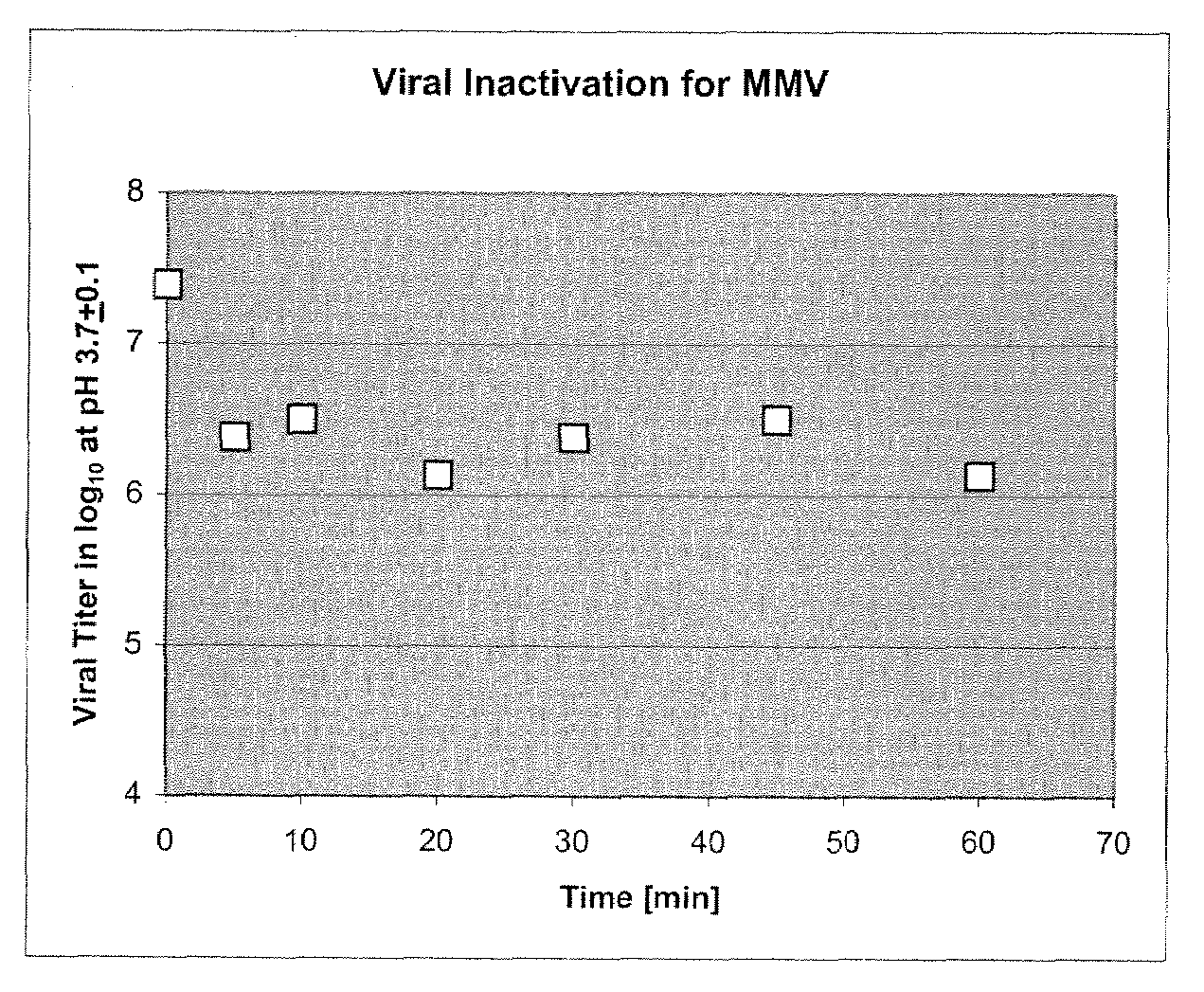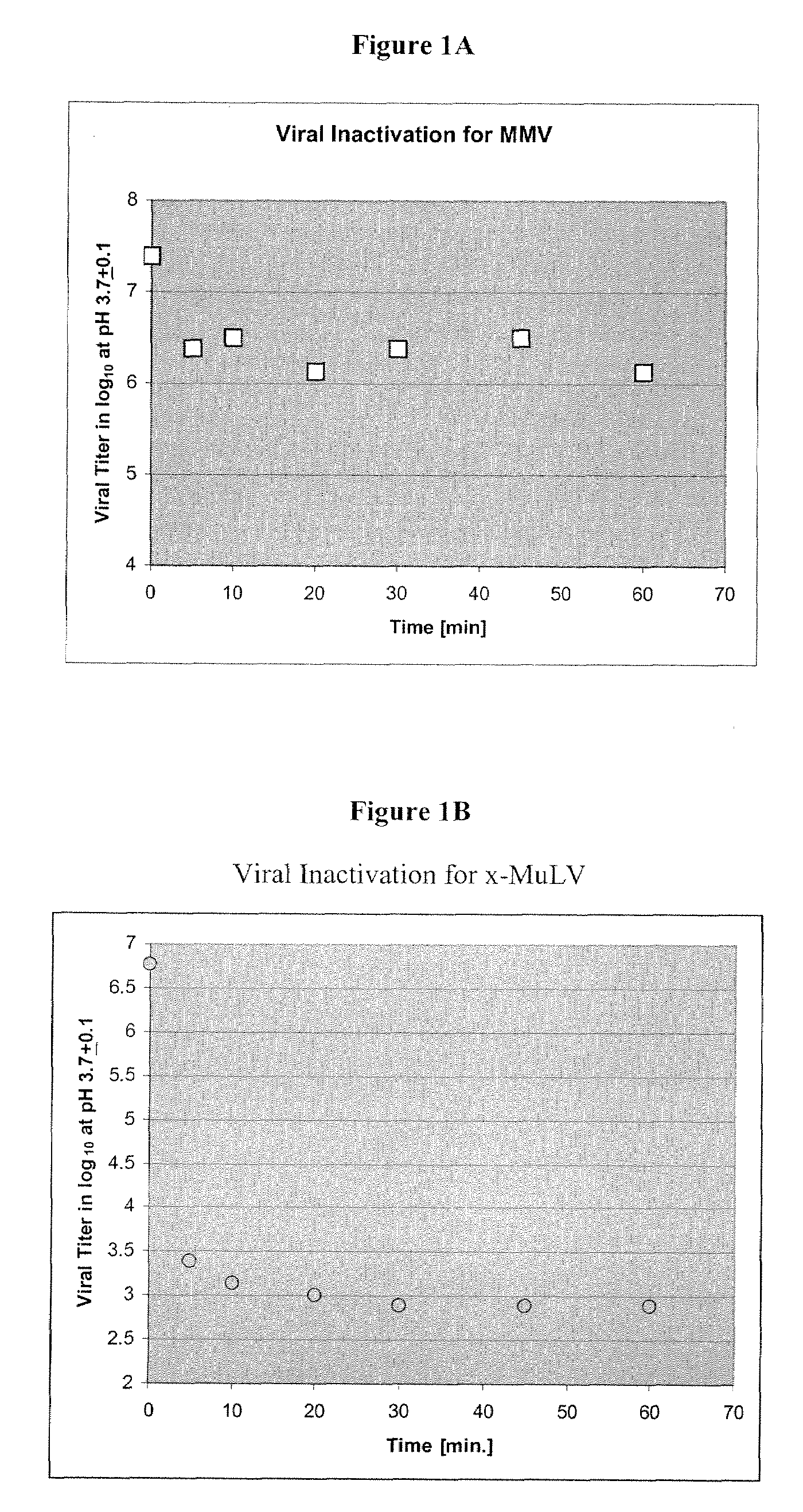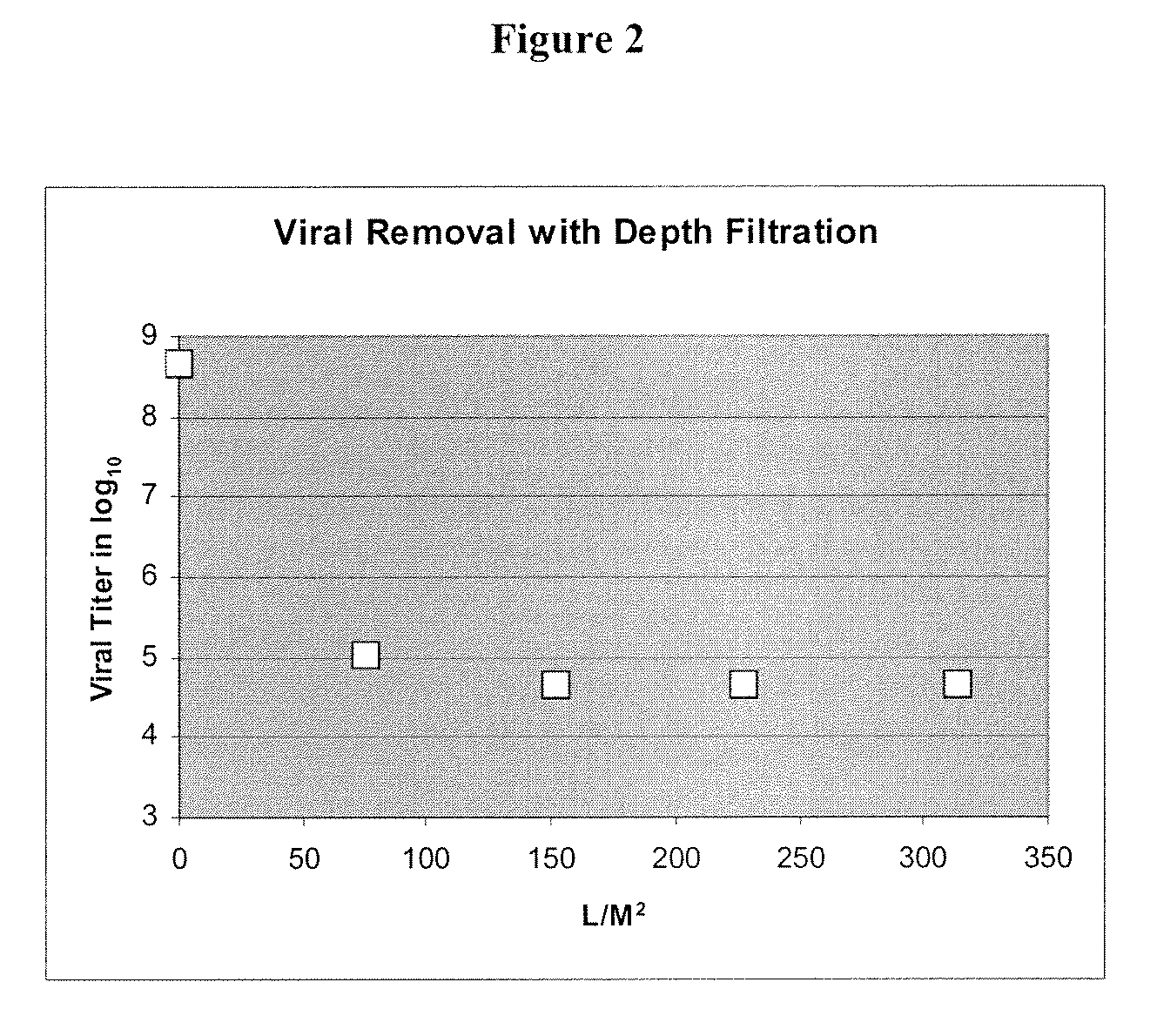Methods for Removing Viral Contaminants During Protein Purification
a technology of protein purification and viral contamination, which is applied in the field of methods for removing viral contaminants during protein manufacturing, can solve the problems of large-scale production of these protein therapeutics, posed a threat to the production of protein therapeutics, and the inability of mammalian cell systems to be easily contaminated with adventitious contaminants
- Summary
- Abstract
- Description
- Claims
- Application Information
AI Technical Summary
Benefits of technology
Problems solved by technology
Method used
Image
Examples
example 1
[0063]Murine Minute Virus, a non-enveloped single-strand DNA parvovirus with an average size of 18-26 nm, is a difficult viral species to be killed or inactivated. Due to its properties, survival ability and particle size, MMV is used as one of model viruses for the validation of a provide bioprocess. To determine a more efficient method of removing this viral contaminant from protein purification processes, a method of removing virus using depth filtration was developed.
[0064]Initially, culture media containing a monoclonal antibody (Mab) was passed over a protein A column to purify the protein from the culture media using a standard procedures known in the art (Schule et al., J. Chromatogr. 587:61-70, (1991)). The Mab was then eluted from the Protein A column using elution buffer according to the manufacturers instructions [e.g., GE Healthcare, Millipore PROsept VAO, Applied Biosystems, PoroA], using a low pH buffer (for example, pH 3.4, 50-100 mm acetic acid). The collected eluat...
PUM
| Property | Measurement | Unit |
|---|---|---|
| pH | aaaaa | aaaaa |
| pH | aaaaa | aaaaa |
| pH | aaaaa | aaaaa |
Abstract
Description
Claims
Application Information
 Login to View More
Login to View More - R&D
- Intellectual Property
- Life Sciences
- Materials
- Tech Scout
- Unparalleled Data Quality
- Higher Quality Content
- 60% Fewer Hallucinations
Browse by: Latest US Patents, China's latest patents, Technical Efficacy Thesaurus, Application Domain, Technology Topic, Popular Technical Reports.
© 2025 PatSnap. All rights reserved.Legal|Privacy policy|Modern Slavery Act Transparency Statement|Sitemap|About US| Contact US: help@patsnap.com



